Highlights
|
Shoulder pain is common, affecting 25% of people of any age and up to about 80% of people over 50 years. The painful condition is associated with impaired quality of life, increased burden to society, and decreased quality and function in work and household activities (Luime et al., 2004; Hodgetts et al., 2021).
Shoulder diseases with persistent pain and dysfunction include adhesive capsulitis, rotator cuff tears or other lesions, bursitis, tendinitis, tendinopathy, impingement and glenohumeral joint osteoarthritis, etc. (Blaine et al., 2008) Injection into lesion sites is one of the commonly recommended treatments for patients who failed to achieve a satisfactory improvement with other conservative strategies such as exercise, physical therapy, non-steroidal anti-inflammatory drugs and acetaminophen (Bury et al., 2018).
Hyaluronic acid (HA) injection has been performed to help manage painful joint conditions for more than 20 years, and has demonstrated important chondroprotective and analgesic effects (Zhang et al., 2019). There are three types of HA, including sodium hyaluronate, sodium acetylated hyaluronate, and hydrolyzed HA. Animal studies and clinical studies have found various therapeutic benefits of HA for shoulder conditions. For example, for adhesive capsulitis, HA demonstrates effects by suppressing synovitis, influencing osmotic pressure, protecting cartilage, preventing adhesion formation, and improving synovial fluid characteristics (Penning et al, 2014).
In this OE Original, we conducted a systematic review of randomized controlled trials (RCTs) and examined up-to-date evidence comparing pain, function and safety outcomes between HA injection and control (placebo or no HA injection) in patients with painful shoulder conditions.
Methods
We searched Ovid MEDLINE, Ovid EMBASE, Cochrane Controlled Register of Trials (CENTRAL), and OrthoEvidence from database inception to August 30, 2022 with both indexed terms and free text terms regarding hyaluronic acid and shoulder. Reference lists and existing systematic reviews were also searched to identify additional eligible studies.
Studies were eligible for inclusion if they met the following criteria: RCTs that compared hyaluronic acid injection with placebo or a non-injection treatment for adult patients who had shoulder pain and/or disability, and that were published in English with full texts available. Conference abstracts were excluded.
We are presenting the meta-analysis results for pain, function, and safety outcomes at three follow-up timepoints: 1 month, 3 months, and 6 months post-intervention. For dichotomous outcomes, we presented risk ratios (RRs) and 95% confidence intervals (CIs). For continuous outcomes, we presented the mean difference (MD) and 95% CI. For studies with outcomes for more than two eligible treatment or control arms — for example, if a study has two treatment arms and one control arm — we divided the data in the control arm by 2 in order to avoid double counting for studies with multiple arms (Higgins et al., 2019). We rated the quality of evidence by GRADE assessment and applied the recommended minimal clinically important difference (MCID) for the respective outcomes to assess the magnitude of effects.
Results
1. Characteristics of included studies
We identified 14 articles that reported on 13 RCTs investigating the effectiveness of HA injection compared with control for painful shoulder diseases (Blaine et al., 2008; Calis et al., 2006; Chou et al., 2010; Di Giacomo et al., 2017; Esmaily et al., 2021; Hsieh et al., 2012, 2021; Kwon et al., 2013; Meloni et al., 2008; Moghtaderi et al., 2013; Oh et al., 2021; Ozgen et al., 2012; Penning et al., 2012, 2014). Of them, one study was supported by industry (Blaine et al., 2008), one study received institutional funding (Hsieh et al., 2012), one study was supported by the government (Hsieh et al., 2021), two studies received no financial support (Chou et al., 2010; Oh et al., 2021), and the remaining studies did not provide relevant information on funding. Four studies enrolled more than 100 patients (Blaine et al., 2008; Hsieh et al., 2021; Kwon et al., 2013; Penning et al., 2012, 2014). Four of the 13 studies (30.8%) reported the use of ultrasound or fluoroscopy guidance in operating injections for all (Hsieh et al., 2021; Meloni et al., 2008; Moghtaderi et al., 2013) or part (Kwon et al., 2013) of their patients. Most of the included RCTs reported the outcomes up to 26 weeks (6 months), with the longest follow-up being 4 years (Ozgen et al., 2012). The characteristics of the RCTs and the study arms included in meta-analysis are presented in Table 1.
Table 1. Characteristics of randomized controlled trials (RCTs) included in meta-analysis | |||||
Author, Year | Country | Number of patients | Patients | HA | Comparator |
Blaine et al., 2018 | United States | 660 | GH OA, rotator cuff tear, and/or adhesive capsulitis | a. Five weekly IA injections of sodium hyaluronate (20 mg/2 mL; MW, 500 to 730 kDa) b. Three weekly IA injections of sodium hyaluronate (same as Group a) followed by two weekly IA injections of saline solution | Five weekly intra-articular 2-mL injections of saline solution |
Calis et al., 2006 | Turkey | 90 | Adhesive capsulitis | Two weekly IA injections of sodium hyaluronate 30 mg (Orthovisc; MW, not reported); home exercises advice | a. Physical therapy modalities; home exercises advice b. Home exercises advice (stretching and Codman exercises) |
Chou et al., 2010 | Taiwan | 51 | Rotator cuff lesions without complete tears | 25 mg/week of sodium hyaluronate (ARTZ Dispo; MW, not reported) injections into the subacromial bursa for 5 consecutive weeks | 2.5 mL of normal saline solution injections into the subacromial bursa for 5 consecutive weeks |
Di Giacomo et al., 2017 | Italy | 78 | Moderate to severe GH OA (grade II-IV) | Three IA injections of HA (Hyalubrix; 30 mg/2 mL; MW > 1,500 kDa) and one injection every 15 days; physiotherapy | Physiotherapy alone |
Esmaily et al., 2021 | Spain | 79 | Shoulder tendinopathy | a. A single subacromial injection of 20 mg/2 mL injection of hyaluronate (Synogel; MW >2000 kDa) b. A single subacromial injection of 20 mg/2 mL injection of hyaluronate (Hyalgan; MW, 500-700 kDa) | Ten sessions of physiotherapy and exercise |
Hsieh et al., 2012 | Taiwan | 70 | Adhesive capsulitis | Three weekly IA 2-mL injections of hyaluronate (10 mg/dL; MW, not reported); physical therapy | Physical therapy alone |
Hsieh et al., 2021 | Taiwan | 186 | Chronic subacromial bursitis | Up to three subacromial – subdeltoid injections of 2.5 mL sodium hyaluronate (ARTZ; 10 mg/mL; MW, 900 kDa) and 1 mL of 1% lidocaine; under ultrasound guidance. Injections were repeated after 2 and 4 weeks, if pain persisted. | Up to three subacromial – subdeltoid injections of 2.5 mL normal saline and 1 mL of 1% lidocaine; under ultrasound guidance |
Kwon et al., 2013 | United States | 300 | GH OA, with or without mixed pathologies | Three weekly IA injections of sodium hyaluronate (SUPARTZ; MW, 620-1,170 kDa); 7.3% of the patients were injected with ultrasound or fluoroscopy guidance | Three weekly injections of phosphate-buffered saline; 7.3% of the patients were injected with ultrasound or fluoroscopy guidance |
Meloni et al., 2008 | Italy | 56 | Supraspinatus tendinosis | Five weekly periarticular injections of 20mg sodium hyaluronate (Hyalgan; MW, 500-700 kDa), 2mL of 1% lidocaine and 2mL of 0.9% sodium chloride solution, under echographic guide; physical therapy | Five weekly periarticular injections of 4mL of 0.9% sodium chloride and 2mL of 1% lidocaine, under echographic guide; physical therapy |
Moghtaderi et al., 2013 | Iran | 40 | Subacromial impingement syndrome without complete tear of rotator cuff | Three weekly injections of 20 mg/2 mL of sodium hyaluronate (Fermathron; MW, not reported) ultrasonography guided | Three weekly injections of 0.9% normal saline |
Oh et al., 2021 | South Korea | 60 | Adhesive capsulitis | A single IA injection of 2 mL HA (Hyruan Plus; MW, 3,000 kDa), 2 mL of saline and 4 mL of contrast media | A single IA injection of 4 mL of saline and 4 mL of contrast media (ioxitalamate) |
Ozgen et al., 2012 | Turkey | 24 | Supraspinatus tendinitis | Three weekly of IA injection of 16 mg/2 mL sodium hyaluronate (G-F 20; MW, 6,000 kDa) | Physical therapy modalities |
Penning et al., 2012, 2014 | The Netherlands | 159 | Subacromial impingement | Up to three subacromial injections of 2 mL HA (Ostenil; MW, not reported) and 8 mL of 1% lidocaine. Injections were repeated after 3 and 6 weeks, if necessary. | Up to three subacromial injections of 2 mL NaCl 0.9% and 8 mL of 1% lidocaine. |
HA, hyaluronic acid; GH OA, glenohumeral osteoarthritis; IA, intra-articular; MW, molecular weight; kDa, kilodaltons.
Figure 1. Risk of bias assessment

2. Quantitative synthesis
2.1 Pain score (0 to 100, a higher score indicates worse pain)
Visual analogue scale (VAS) for pain, and the pain subscale of Shoulder Pain and Disability Index (SPADI) are normalized on a 0 to 100 scale to assess pain post-intervention (Velentgas et al., 2010). The minimal important difference (MID) of VAS pain score in patients with shoulder pathologies or dysfunction is described as 1.5 points on the 0 to 10 scale, which is equivalent to 15 points on the 0 to 100 scale (Hao et al., 2019).
In the current comparison of HA injection versus control (placebo of saline injection, physical therapy or exercise) for pain at 1 month (725 patients from 8 studies; MD, -12.21; 95% CI, -27.07 to 2.66), there is no significant difference between the two groups, with low certainty of evidence due to imprecision and inconsistency (Figure 2).
At 3 months of follow-up, a total of 1,395 patients from 10 RCTs published between 2006 and 2021 were included in the analysis. The overall effect shows that HA injection results in a significant improvement in pain with patients experiencing, on average, a 11.01 (95% CI, 2.66 to 19.37) point improvement, with low certainty of evidence. The point estimate of effect and higher boundary of the 95% CI did not exceed the recommended MID of 15 points on the 0 to 100 scale (Figure 3).
At 6 months of follow-up, a total of 1,038 patients from 4 RCTs published between 2008 and 2021 were included in the analysis. The overall effect demonstrates that HA injection results in a significant improvement in pain with patients experiencing, on average, a 4.19 (95% CI, 0.61 to 7.76) point improvement, with moderate certainty of evidence. Nevertheless, the effect and 95% CI did not exceed the recommended MID of 15 points on the 0 to 100 scale (Figure 3).
Figure 2. Forest plot of pain on a 0-100 scale
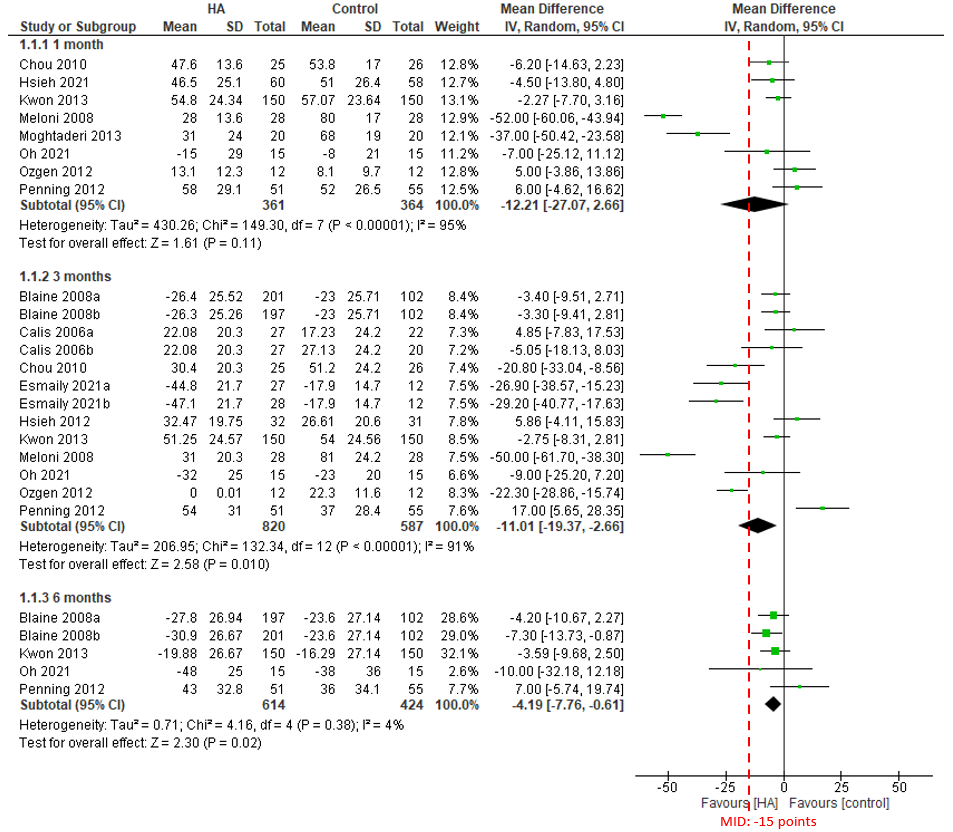
HA, hyaluronic acid; MID, minimal important difference.
2.2 Function (0 to 100, a higher score indicates better function)
We normalized the Constant score, Disability of the Arm, Shoulder and Hand (DASH) score, Shoulder Disability Questionnaire (SDQ), and American Shoulder and Elbow Surgeons Standardized Shoulder Assessment Form (ASES) on a 0 to 100 scale (higher score, better function) to assess patient function post intervention (Velentgas et al., 2010).
The MID of the Constant score (the most reported scale among the included studies) in patients with shoulder pathologies or dysfunction is found to be 8.3 points on the 0 to 100 scale (Hao et al., 2019).
At 1 month of follow-up, a total of 329 patients from 5 RCTs published between 2006 and 2021 were included in the analysis. There is no significant difference between HA injection and control (MD, 0.3; 95% CI, -3.16 to 3.75), with moderate certainty of evidence (Figure 3).
At 3 months of follow-up, a total of 462 patients from 8 RCTs published between 2010 and 2021 were included in the analysis. The overall effect demonstrates that HA injection results in a significant functional improvement with patients experiencing, on average, a 7.07 (95% CI, 1.41 to 12.72) point improvement. Nevertheless, the effect and 95% CI did not exceed the recommended MID of 8.3 points on the 0 to 100 scale. The certainty of the evidence was rated as moderate due to inconsistency (Figure 3).
At 6 months of follow-up, a total of 214 patients from 3 RCTs published between 2012 and 2021 were included in the analysis. There is no significant difference between HA injection and control (MD, 2.57; 95% CI, -10.02 to 15.16), with low certainty of evidence (Figure 3).
Figure 3. Forest plot of function on a 0-100 scale
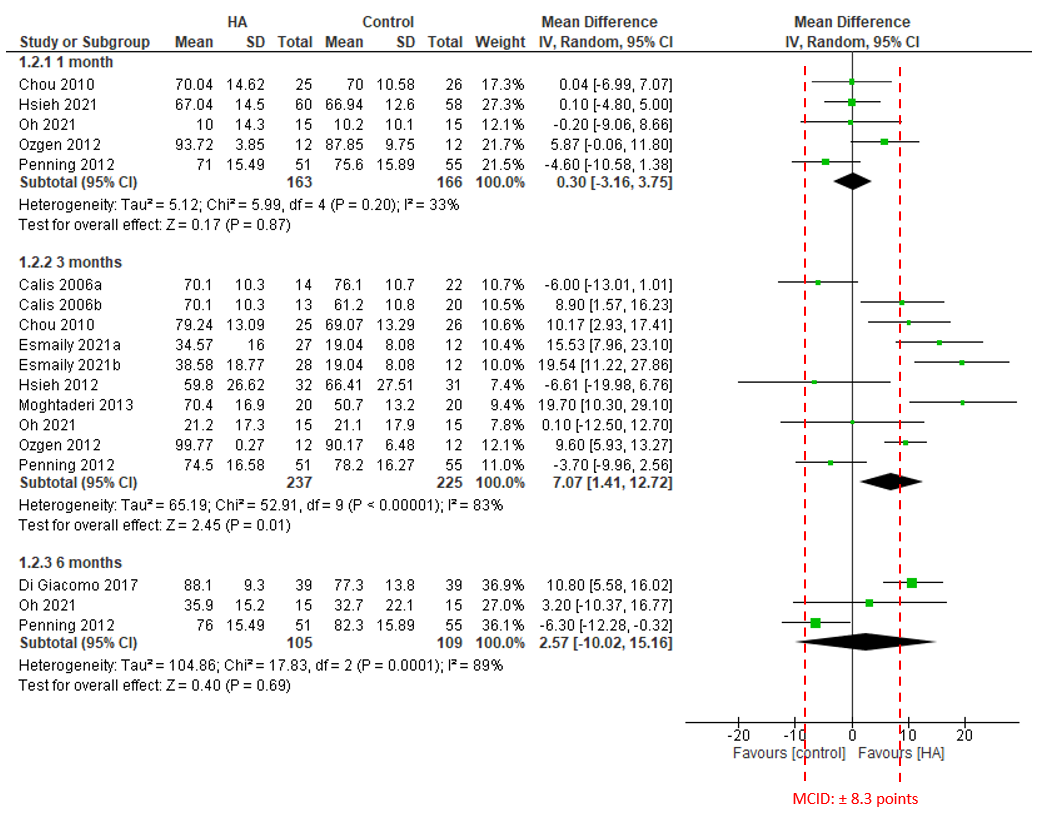
HA, hyaluronic acid; MID, minimal important difference.
2.3 Incidences of adverse events and serious adverse events
At the longest follow-up, a total of 1,394 patients from 9 RCTs published between 2008 and 2021 reported the outcome of adverse events. In 5 studies, patients did not report any adverse events in either group (Chou et al., 2010; Di Giacomo et al., 2017; Meloni et al., 2008; Moghtaderi et al., 2013; Ozgen et al., 2012). The meta-analysis result shows that there is no significant difference between HA injection and control in terms of incidence of any adverse events (41.8% in HA group vs. 38.6% in the control group; RR, 0.97; 95% CI, 0.83 to 1.14), with moderate certainty of evidence (Figure 3).
There is no significant difference between HA injection and control for incidence of serious adverse events (960 patients from 2 studies; 4.1% in HA group vs. 5.1% in the control group; RR, 0.78; 95% CI, 0.28 to 2.18), with low certainty of evidence (Figure 3).
Most reported adverse events were mild and included pain, hematoma, hemorrhage, swelling, redness and subjective feeling of rigidity at the injection sites; arthralgia, nasopharyngitis, headache, flushes, tingling, nausea, back pain, and musculoskeletal pain associated with the trial shoulder (Blaine et al., 2008; Esmaily et al., 2021; Kwon et al., 2013; Penning et al., 2012, 2014).
Figure 4. Forest plot of adverse events and serious adverse events
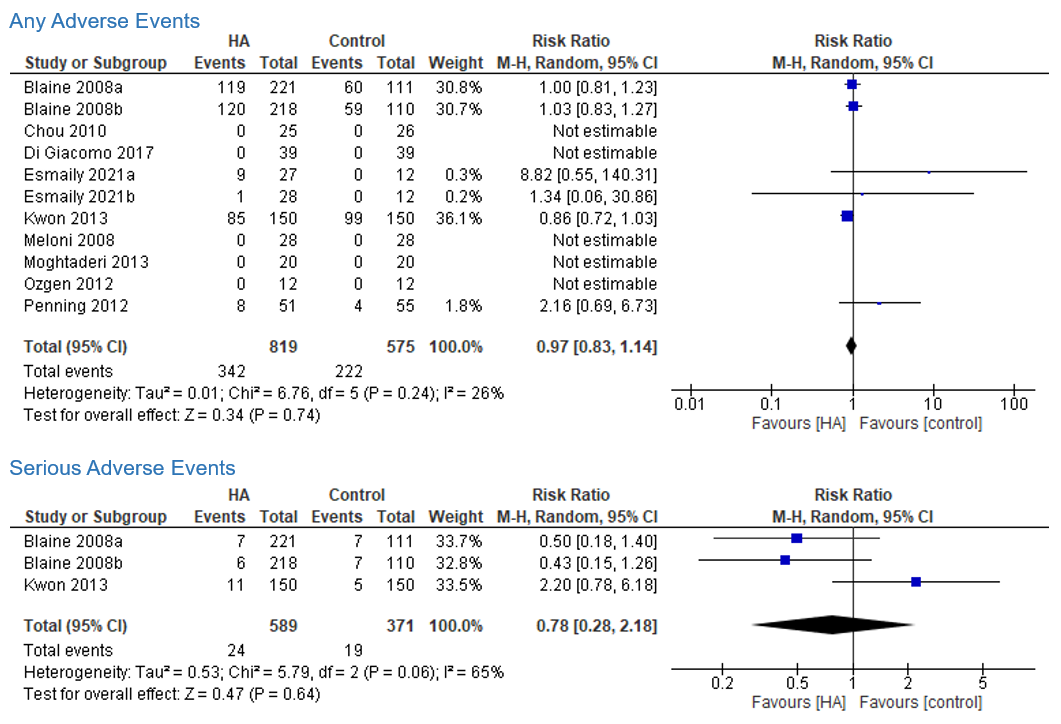
We present a summary of the four outcome measures at three follow-up timepoints in Table 2.
Table 2. Summary and certainty of the evidence
Outcome | Follow-up | ||
1 month | 3 months | 6 months | |
Pain | No difference (Low certainty) | Favours HA (Low certainty) | Favours HA (Moderate certainty) |
Function | No difference (Moderate certainty) | Favours HA (Moderate certainty) | No difference (Low certainty) |
Any adverse events* | No difference (Moderate certainty) | ||
Serious adverse events* | No difference (Low certainty) | ||
HA, hyaluronic acid; *At the longest follow-up.
3. OE M.I.N.D. Ongoing Trials Report
The OE M.I.N.D. ongoing trials tool uses a unique interface to harness data from the clinicaltrials.gov registry. We found two registered, ongoing studies that are investigating the effects of HA injection in treating shoulder pathologies. They are both interventional studies being conducted in Turkey and aiming to recruit 160 patients (Figure 5).
Figure 5. Ongoing trials HA for shoulder conditions
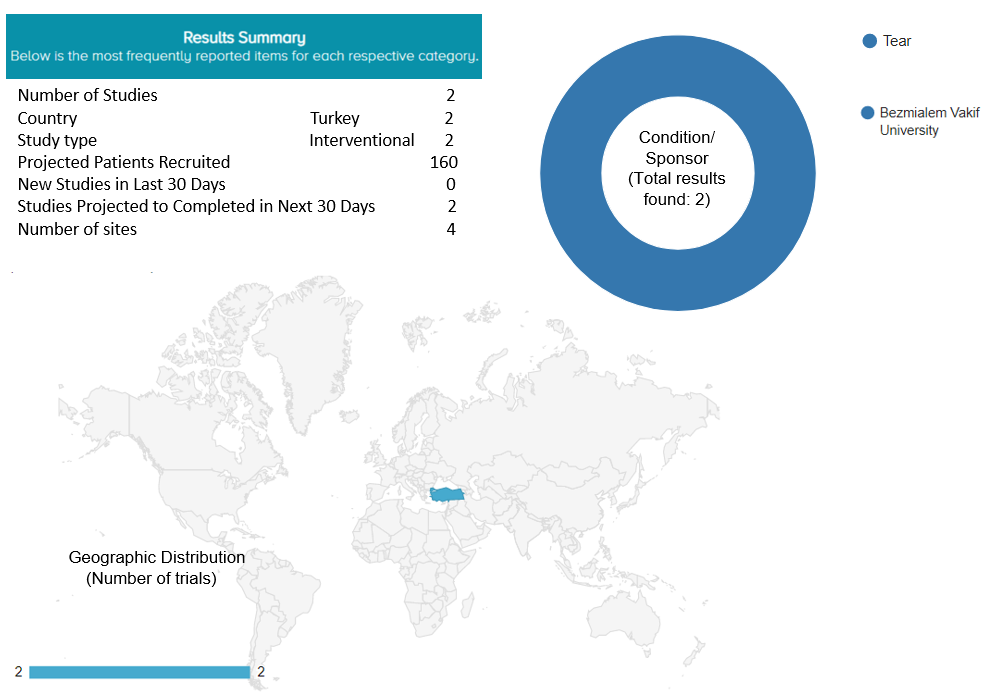
Discussion
In this OE Original, we identified 13 RCTs that investigated the efficacy and safety of HA injection versus control in patients with painful shoulder diseases. Our meta-analyses showed that HA was superior to control in pain improvement at 3 and 6 months’ follow-up, and in function improvement at 3 months’ follow-up, with moderate certainty of evidence. For both pain and function, the effects and 95% CIs did not exceed the recommended MID. No statistically significant difference was found between the two groups in pain and function short-term (1 month) and in function at 6 months’ follow-up.
There were no statistically significant differences in adverse events or serious adverse events between HA injection and control groups at the longest follow-up. Previous studies suggested that HA is a safe treatment for musculoskeletal conditions (Osti et al., 2015; Lee et al., 2015; Zhang et al., 2019; Mao et al., 2022). HA injection is a minimally invasive and a relatively easy-to-administer option for patients with shoulder pathologies. Most clinicians in the studies included in our systematic review administered the injections without use of ultrasound or fluoroscopy guidance. They either had experiences in treating chronic shoulder conditions with subacromial or intra-articular injection (Calis et al, 2006; Esmaily 2021 et al., 2021; Hsieh et al., 2012), or completed the standard training in techniques for injection into the glenohumeral joint before the trials (Blaine et al., 2008; Penning et al., 2012, 2014).
The results in this OE Original are consistent with the previously published systematic reviews that have found HA improves pain, function and physical performance, and is a safe treatment for patients with shoulder diseases such as glenohumeral osteoarthritis, adhesive capsulitis and rotator cuff tendinopathy (Harris et al., 2011; Colen et al., 2014; Osti et al., 2015; Lee et al., 2015; Zhang et al., 2019; Mao et al., 2022).
One of the major concerns during the evidence quality assessment was imprecision. As a result, the GRADE assessment was rated one level lower regarding all outcomes due to imprecision. Although the CIs of the outcomes excluded the no effect line, their CIs crossed the recommended MID values. In such cases, clinical decisions would differ if the upper boundary versus the lower boundary of the CIs represented the true effect, for patients to achieve a minimally important improvement (Guyatt et al., 2011a). The diversity in patient conditions (studies enrolled a mixture or sole types of patients), doses (from a single dose to 5 doses) and types of HA prevented us from performing appropriate subgroup analyses. We take into account the identified heterogeneities across studies by lowering the GRADE rating by one level for pain at 1 and 3 months’ follow-up, function at 3 and 6 months’ follow-up, and incidence of serious adverse events (Guyatt et al., 2011b).
Additional future research with larger sample sizes, longer follow-ups (e.g., >6months), and investigating different doses and molecular weights of HA is needed to comprehensively evaluate the outcomes and associated cost, and verify the findings of the current meta-analysis results.
Bottom Line
A meta-analysis of 13 RCTs showed that for patients with painful shoulder diseases, HA injection is associated with small benefits in pain at medium-term follow-up (3 months and 6 months), but such a benefit was not identified at short-term follow-up (1 month). Small benefits of HA are found for function at 3 months of follow-up. The reported adverse events after treatment were mild and there was no statistically significant difference between the two groups.
References
Blaine T, Moskowitz R, Udell J, Skyhar M, Levin R, Friedlander J, Daley M, Altman R. Treatment of persistent shoulder pain with sodium hyaluronate: a randomized, controlled trial: a multicenter study. JBJS. 2008 May 1;90(5):970-9.
Bury J, Littlewood C. Rotator cuff disorders: a survey of current (2016) UK physiotherapy practice. Shoulder & elbow. 2018 Jan;10(1):52-61.
Calis M, Demir H, Ulker S, Kirnap M, Duygulu F, Calis HT. Is intraarticular sodium hyaluronate injection an alternative treatment in patients with adhesive capsulitis?. Rheumatology international. 2006 Apr;26(6):536-40.
Chou WY, Ko JY, Wang FS, Huang CC, Wong T, Wang CJ, Chang HE. Effect of sodium hyaluronate treatment on rotator cuff lesions without complete tears: a randomized, double-blind, placebo-controlled study. Journal of shoulder and elbow surgery. 2010 Jun 1;19(4):557-63.
Colen S, Geervliet P, Haverkamp D, Van Den Bekerom MP. Intra-articular infiltration therapy for patients with glenohumeral osteoarthritis: A systematic review of the literature. International journal of shoulder surgery. 2014 Oct;8(4):114.
Di Giacomo G, de Gasperis N. Hyaluronic acid intra-articular injections in patients affected by moderate to severe glenohumeral osteoarthritis: a prospective randomized study. Joints. 2017 Sep;5(03):138-42.
Esmaily H, Mohebbi R, Rezasoltani Z, Kasaiyan S, Dadarkhah A, Mir M. Subacromial Injections of Low-or High-Molecular-Weight Hyaluronate Versus Physical Therapy for Shoulder Tendinopathy: A Randomized Triple-Blind Controlled Trial. Clinical Journal of Sport Medicine: Official Journal of the Canadian Academy of Sport Medicine. 2021 Nov 10.
Guyatt GH, Oxman AD, Kunz R, Brozek J, Alonso-Coello P, Rind D, Devereaux PJ, Montori VM, Freyschuss B, Vist G, Jaeschke R. GRADE guidelines 6. Rating the quality of evidence—imprecision. Journal of clinical epidemiology. 2011 Dec 1;64(12):1283-93.
Guyatt GH, Oxman AD, Kunz R, Woodcock J, Brozek J, Helfand M, Alonso-Coello P, Glasziou P, Jaeschke R, Akl EA, Norris S. GRADE guidelines: 7. Rating the quality of evidence—inconsistency. Journal of clinical epidemiology. 2011 Dec 1;64(12):1294-302.
Hao Q, Devji T, Zeraatkar D, Wang Y, Qasim A, Siemieniuk RA, Vandvik PO, Lähdeoja T, Carrasco-Labra A, Agoritsas T, Guyatt G. Minimal important differences for improvement in shoulder condition patient-reported outcomes: a systematic review to inform a BMJ Rapid Recommendation. BMJ open. 2019 Feb 1;9(2):e028777.
Harris JD, Griesser MJ, Copelan A, Jones GL. Treatment of adhesive capsulitis with intra-articular hyaluronate: a systematic review. International Journal of Shoulder Surgery. 2011 Apr;5(2):31.
Higgins JP, Thomas J, Chandler J, Cumpston M, Li T, Page MJ, Welch VA, editors. Cochrane handbook for systematic reviews of interventions. John Wiley & Sons; 2019 Sep 23.
Hodgetts CJ, Leboeuf-Yde C, Beynon A, Walker BF. Shoulder pain prevalence by age and within occupational groups: a systematic review. Archives of physiotherapy. 2021 Dec;11(1):1-2.
Hsieh LF, Hsu WC, Lin YJ, Chang HL, Chen CC, Huang V. Addition of intra-articular hyaluronate injection to physical therapy program produces no extra benefits in patients with adhesive capsulitis of the shoulder: a randomized controlled trial. Archives of physical medicine and rehabilitation. 2012 Jun 1;93(6):957-64.
Hsieh LF, Lin YJ, Hsu WC, Kuo YC, Liu YC, Chiang YP, Wang CP. Comparison of the corticosteroid injection and hyaluronate in the treatment of chronic subacromial bursitis: A randomized controlled trial. Clinical Rehabilitation. 2021 Sep;35(9):1305-16.
Kwon YW, Eisenberg G, Zuckerman JD. Sodium hyaluronate for the treatment of chronic shoulder pain associated with glenohumeral osteoarthritis: a multicenter, randomized, double-blind, placebo-controlled trial. Journal of Shoulder and Elbow Surgery. 2013 May 1;22(5):584-94.
Lee LC, Lieu FK, Lee HL, Tung TH. Effectiveness of hyaluronic acid administration in treating adhesive capsulitis of the shoulder: a systematic review of randomized controlled trials. BioMed research international. 2015 Jan 31;2015.
Luime JJ, Koes BW, Hendriksen IJ, Burdorf A, Verhagen AP, Miedema HS, Verhaar JA. Prevalence and incidence of shoulder pain in the general population; a systematic review. Scandinavian journal of rheumatology. 2004 Mar 1;33(2):73-81.
Mao B, Peng R, Zhang Z, Zhang K, Li J, Fu W. The Effect of Intra-articular Injection of Hyaluronic Acid in Frozen Shoulder: A Systematic Review and Meta-analysis of Randomized Controlled Trials. Journal of Orthopaedic Surgery and Research. 2022 Dec;17(1):1-0.
Meloni F, Milia F, Cavazzuti M, Doria C, Lisai P, Profili S, Meloni GB. Clinical evaluation of sodium hyaluronate in the treatment of patients with sopraspinatus tendinosis under echographic guide: experimental study of periarticular injections. European journal of radiology. 2008 Oct 1;68(1):170-3.
Moghtaderi A, Sajadiyeh S, Khosrawi S, Dehghan F, Bateni V. Effect of subacromial sodium hyaluronate injection on rotator cuff disease: a double-blind placebo-controlled clinical trial. Advanced Biomedical Research. 2013 Jan 1;2(1):89.
Oh SH, Sung WS, Oh SH, Jo CH. Comparative analysis of intra-articular injection of steroid and/or sodium hyaluronate in adhesive capsulitis: prospective, double-blind, randomized, placebo-controlled study. JSES Int. 2021;5(6):1091–104. doi: 10.1016/j.jseint.2021.07.017. PubMed PMID: 34766090; PubMed Central PMCID: PMCPMC8568987.
Osti L, Buda M, Del Buono A, Osti R, Massari L. Clinical evidence in the treatment of rotator cuff tears with hyaluronic acid. Muscles, Ligaments and Tendons Journal. 2015 Oct;5(4):270.
Özgen M, Firat S, Sarsan A, Topuz O, Ardiç F, Baydemir C. Short-and long-term results of clinical effectiveness of sodium hyaluronate injection in supraspinatus tendinitis. Rheumatology international. 2012 Jan;32(1):137-44.
Penning LI, de Bie RA, Walenkamp GH. Subacromial triamcinolone acetonide, hyaluronic acid and saline injections for shoulder pain: an RCT investigating the effectiveness in the first days. BMC musculoskeletal disorders. 2014 Dec;15(1):1-9.
Penning LI, De Bie RA, Walenkamp GH. The effectiveness of injections of hyaluronic acid or corticosteroid in patients with subacromial impingement: a three-arm randomised controlled trial. The Journal of Bone and Joint Surgery. British volume. 2012 Sep;94(9):1246-52.
Velentgas P, Dreyer NA, Wu AW. Outcome Definition and Measurement. In: Velentgas P, Dreyer NA, Nourjah P, et al., editors. Developing a Protocol for Observational Comparative Effectiveness Research: A User's Guide. Rockville (MD): Agency for Healthcare Research and Quality (US); 2013 Jan. Chapter 6. Available from: https://www.ncbi.nlm.nih.gov/books/NBK126186/
Zhang B, Thayaparan A, Horner N, Bedi A, Alolabi B, Khan M. Outcomes of hyaluronic acid injections for glenohumeral osteoarthritis: a systematic review and meta-analysis. Journal of Shoulder and Elbow Surgery. 2019 Mar 1;28(3):596-606.




 LOGIN
LOGIN

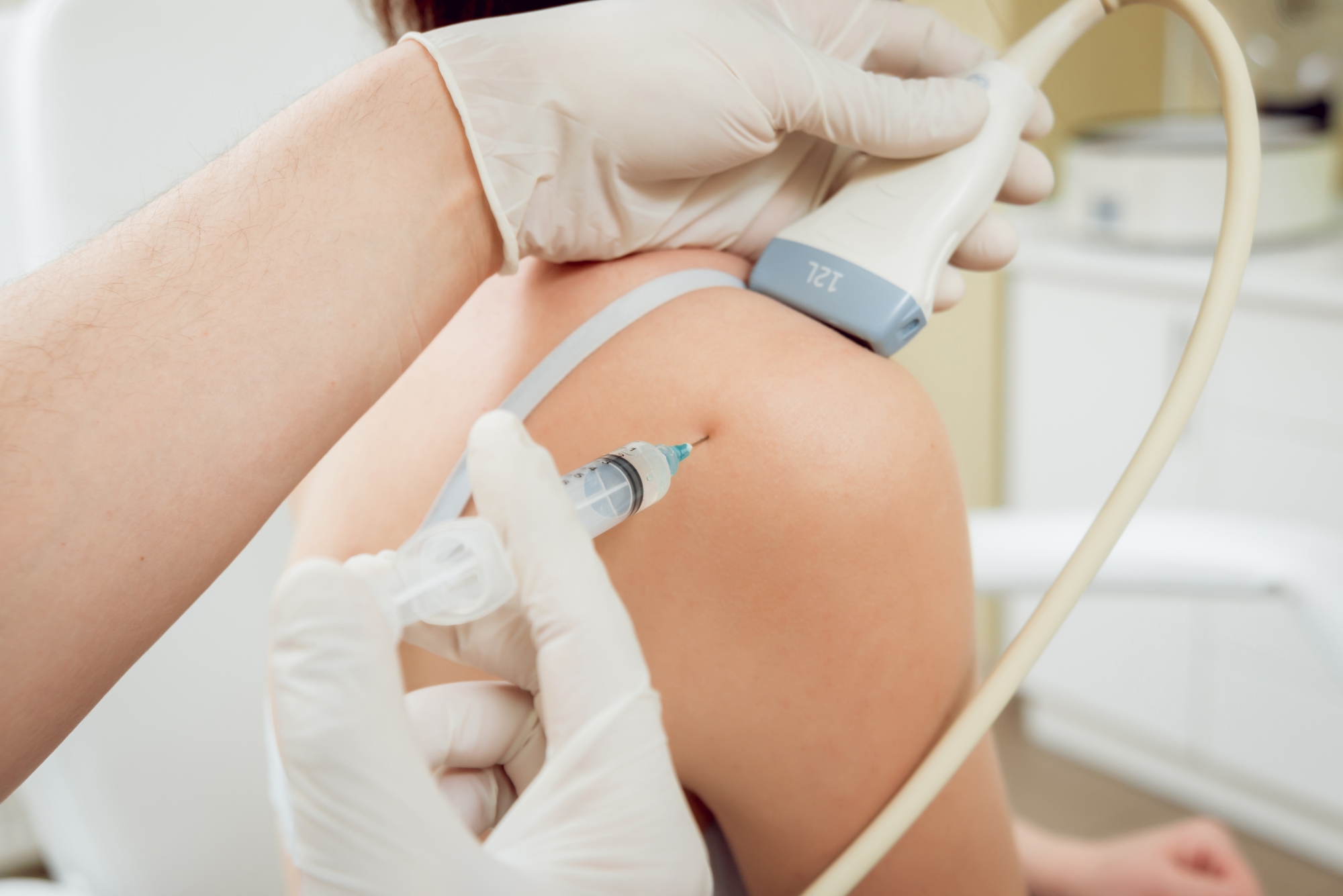
Join the Conversation
Please Login or Join to leave comments.